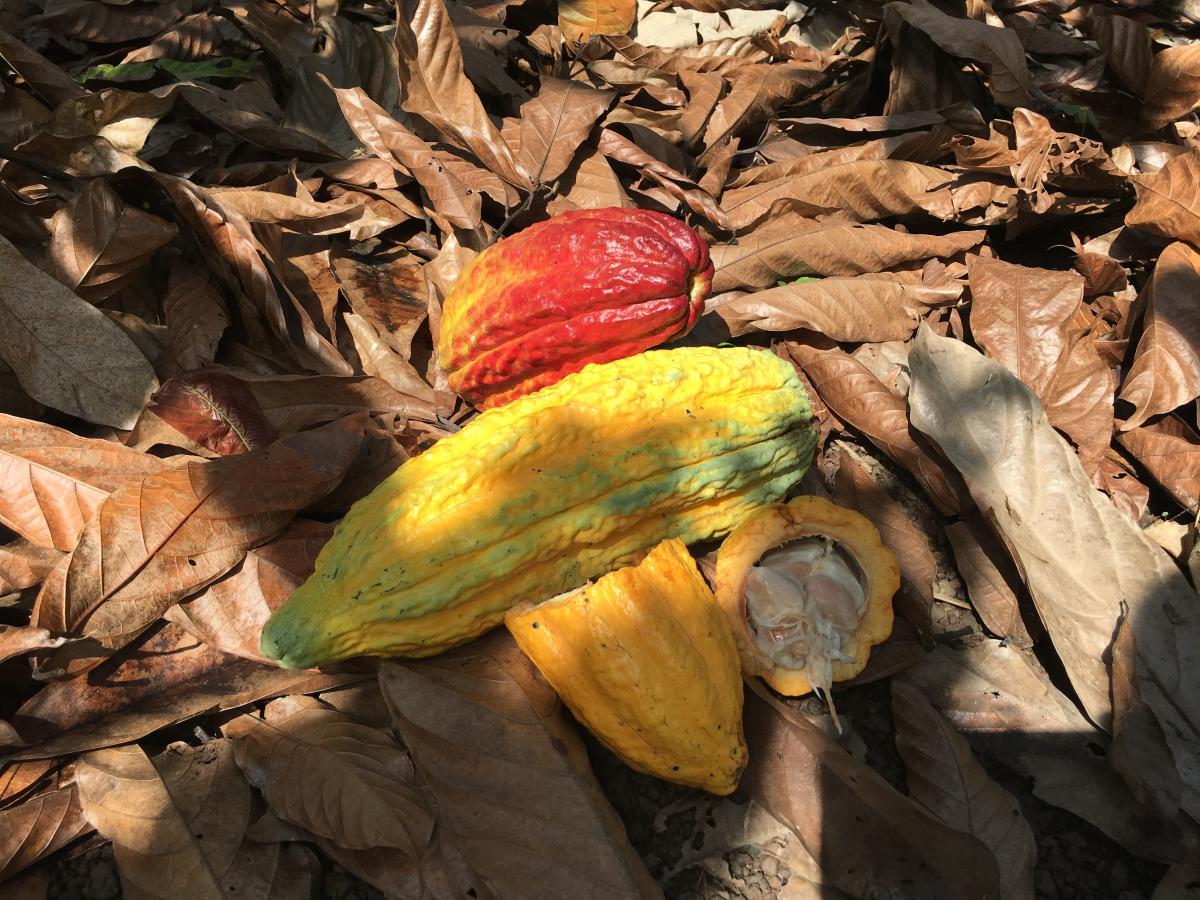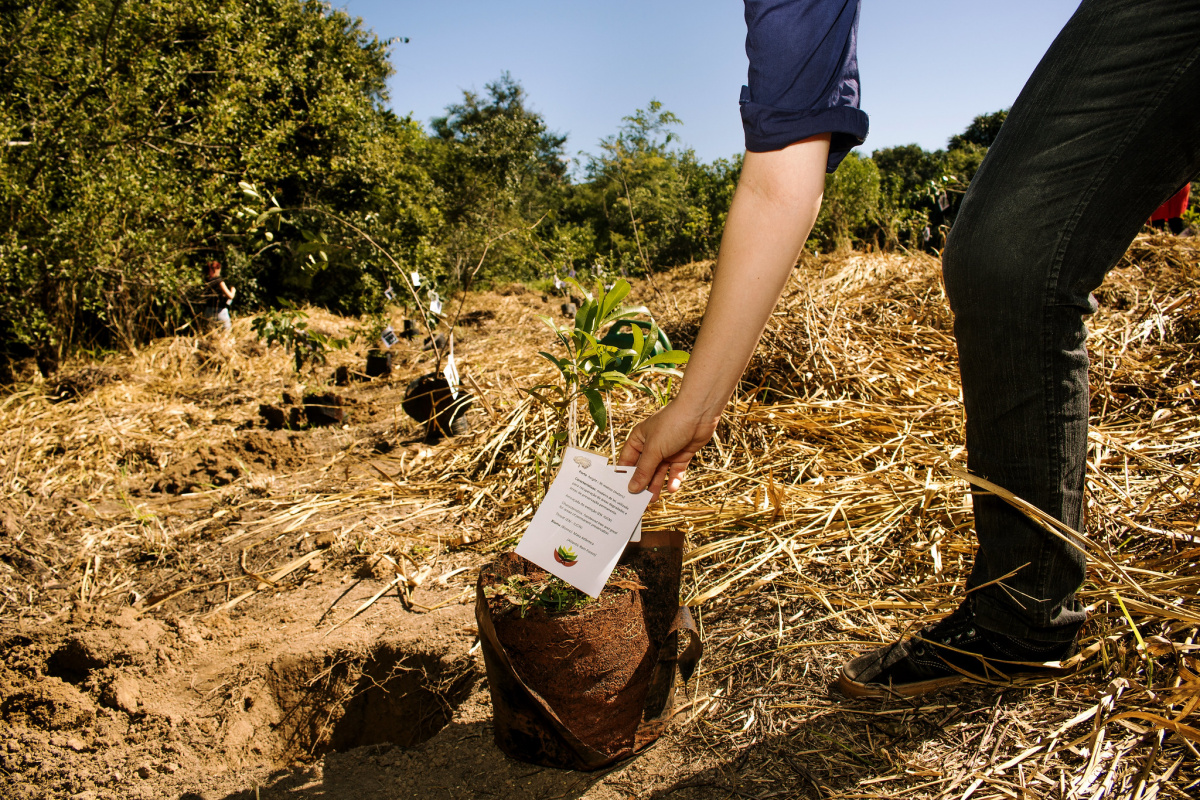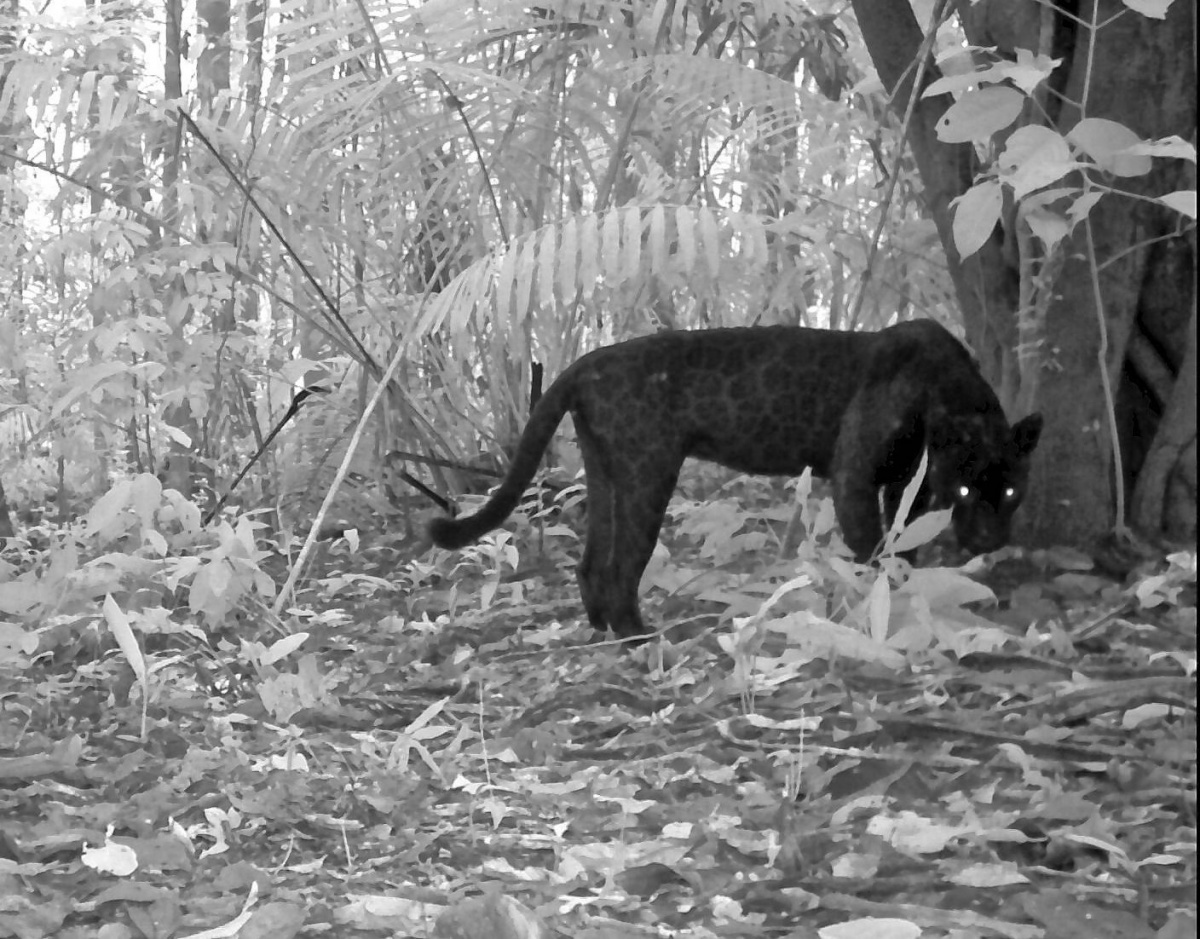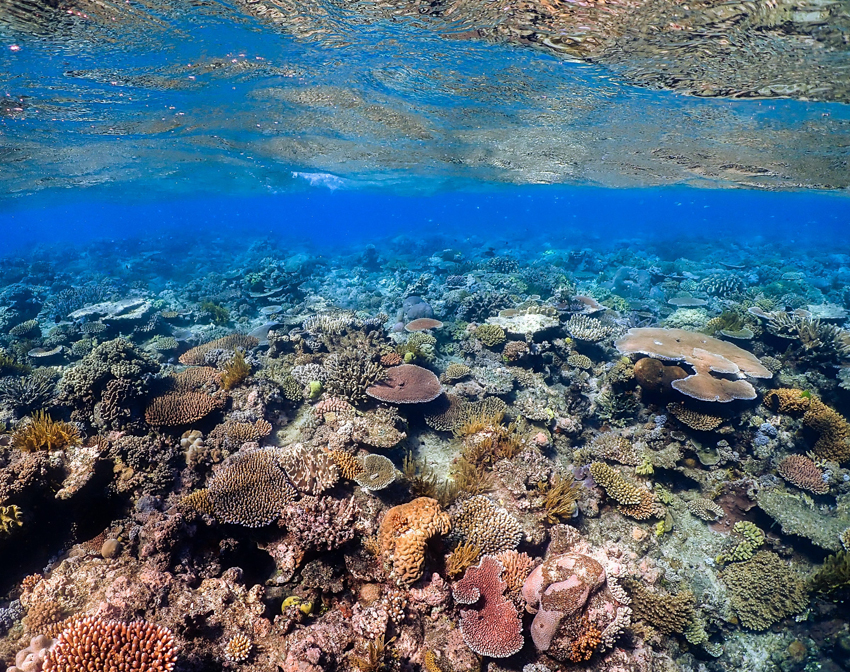Supporting cacao production and restoration in Brazil
Using cacao agroforestry systems to restore the Brazilian rainforest while improving livelihoods and producing deforestation-free commodities in Brazil. A blog by Rodrigo Mauro Freire of The Nature Conservancy (TNC) and Salome Begeladze of IUCN.

Photo: IUCN / Salome Begeladze
In the last few decades, the rainforests of the Brazilian Amazon have been rapidly degraded by being converted into pasturelands with poor livestock practices leading to the loss of forest and ecosystems.
Deforestation for agricultural expansion comes with a significant climate cost: greenhouse gas emissions from deforestation and forest degradation account for 10-11% of total global emissions. Overall, agriculture, deforestation and other land uses account for about 25% of total global emissions. Deforestation is most apparent when linked to key agriculture commodities as such as palm oil, soy, cattle and wood products, and to certain geographies such as Indonesia, Brazil, Malaysia and Paraguay. Thus, it is crucial to decouple commodities from deforestation and degradation and look for nature-based solutions as such as forest landscape restoration (FLR). In this regard, cacao agroforestry and silvopastual systems, as part of FLR interventions, present viable solutions to agro-commodity driven deforestation and degradation.
The adoption of cacao, grown beneath a variety of shade trees, by small-scale farmers in the Amazon is a nature-based solution, not only to the future of world quality cacao supply but also to restoring intensively deforested land with native trees. The cacao tree (Theobroma cacao) is native to the Amazon rainforests and produces the main ingredient in chocolate.
When the cacao tree is grown under shade canopy, it provides multiple benefits such as fetching a higher price than conventional cacao. When intercropped with other useful crops (eg. cassava, bananas, mahogany, rubber, acai, cupuacu, andiroba, jatobá, etc.), cacao agroforestry systems provide alternative economic returns to farmers, thus diversifying their livelihoods options. These systems also provide significant environmental benefits as such as maintaining soil fertility, increasing supply of organic matter in soil, hosting pollinators, habitat for native birds and animals, creating ecological corridors between native forest fragments, as well as regulating water flow and nutrient cycles. When compared to traditional agricultural practices, cacao-agroforestry systems contribute to reduced greenhouse gas emissions and increased carbon sequestration.
The future of the world’s cacao supply depends on both quantity (the sustainability of cacao production) and quality (improved varieties). Brazil is the sixth largest cacao producer globally (Bahia and Pará States are the largest producers in the country). Given the supply gaps and production declines in West Africa due to land degradation, poor farming practices, climate change induced disasters and aging plantations, Brazil has the potential to become a major cacao producer, and set an example for how countries can decrease commodity driven deforestation.
The Forest Cacao Project
São Félix do Xingu municipality of Pará State is a top cattle producer in Brazil, and due to extensive cattle ranching the region has been identified as the most deforested municipality in the Amazon. The Nature Conservancy (TNC) with support from Ministry of Agriculture´s Cacao Research and Technical Extension Agency (CEPLAC), the World Agroforestry Centre (ICRAF) and with financial support from Cargill, the Norwegian Agency for Development Cooperation (NORAD), and IUCN, as part of the KNOWFOR program funded by UK aid from the UK government, has been working with smallholder farmers to promote restoration of degraded pastures with cacao-based agroforestry systems. The adoption of cacao agroforestry systems as an FLR intervention to degraded pasturelands have been stimulated by the number of factors:
- favorable prospects for cacao on the national and international markets and the expectation of a global cacao supply gap;
- environmental policies (Brazilian Forest Code) obliging land owners to reforest excess cleared land with native trees, for which biodiverse agroforestry systems are a good option;
- Pará State goal to transform the region into the number one cacao producer;
- favorable biophysical conditions with low agrochemical inputs for growing cacao in the region; and
- climate change mitigation as cacao agroforestry systems can reduce carbon emissions.
A new video called, Amplifying cacao producers’ voices: cacao agroforestry systems restoring the Amazon rainforest while improving livelihoods and producing deforestation free commodities Pará State, Brazil features the voices of female farmers who run cacao farms, and on business ventures on deforestation-free commodities and government and civil society institutions who promote FLR with cacao-based agroforestry systems as a sustainable agriculture alternative for small farmers. The video captures the importance of involving women and youth in good management practices with cacao agroforestry systems, deforestation-free supply chain development, and low carbon economic viability of cacao agroforestry systems.
The Forest Cacao Project has the potential to become an important benchmark to show how it is possible to expand the cocoa commodity supply chain in a sustainable way, without deforestation and child labor, while promoting the restoration of native forests through cocoa based biodiverse agroforestry systems that promote better income and food security for family farmers in the Brazilian Amazon rainforest. And for the cacao processing and chocolate industry side this solution, it is of great value to present social and environmental responsibility to their consumers.
Capacity building: the project focuses on building the capacity of rural extension agents and technicians to provide technical assistance to farmers and communities, particularly to women who are largely responsible for the financial management of smallholdings. Participatory demonstration units are established to exhibit cacao-growing best practices on the ground. To date, 117 farmers have been trained. Women are generally less involved in decision-making processes related to FLR, less informed about sustainable land management and have less capital to invest in their farms than men. However, when provided with greater empowerment and opportunity to improve their skills to manage rural properties, women are known to better manage their cacao agroforestry plots. Women play an important role in cacao agroforestry because their engagement ensures greater species diversity for family food, medicinal plants and more. The women also play important roles in the management of the finances from the agricultural production.
Two important project applications underway are:
- The Forest Cacao Portal helps farmers register in the Rural Environment Registry (currently 85% of properties registered) that evaluates the compliance with the Forest Code and systematically monitors deforestation and increase in forest cover of their cacao production under agroforestry.
- AnaliSAFs platform supports rural producers and technicians by providing a valuable socio-environmental and financial analysis of agroforestry plantations and key indicators to improve their production systems and decision making.
Opportunities for low carbon economic development and deforestation-free commodities: The cacao agroforestry model provides a profitable and sustainable alternative to national low carbon economic and sustainable supply chain development. There is enough evidence that cacao grown under agroforestry systems contributes to zero deforestation, which plays a vital role in ensuring that private cacao processing and chocolate producing companies support agroforestry cacao as part of their effort to source deforestation-free cacao. Cargill, for example, started its partnership with TNC in 2013 and is financially and technically supporting the Forest Cacao Project to expand cacao-based agroforestry in São Felix do Xingu and Tucumã municipalities in South Pará Region.
Environmental Benefits: One important pioneering aspect of the cacao agroforestry systems in Pará state is that it is based on actions that avoid deforestation by using already degraded land and catalysing FLR. The project is contributing to Brazil’s Nationally Determined Contribution (NDC) to strengthen the Forest Code. Total area to be restored and suitable for cacao agroforestry systems in Pará State is 557,500 ha. The project target is to restore 22,000 ha by 2022.
Economic benefits: In São Felix do Xingu, approximately 70% of private lands have been deforested, and farmers and ranchers with plots of <300 ha are responsible for approximately 40% of the deforestation. The economic benefits of cacao agroforestry systems (compared to cattle ranching) are estimated to yield annual net profits of US$ 1,750 per ha with an average cacao yield of 700 kg per ha. Due to the fact that the consumer market for chocolate and cacao products is growing, the sale of cacao by the rural producer in Pará is ensured, despite price variations over the year.
Moving forward: FLR, through agroforestry systems, is a viable nature-based solution to improving deforested and degraded lands and ensuring sustainable cacao supply chains in the Amazon. Although farmers’ willingness to restore and adopt deforestation-free practices are critical, the benefits are ample enough to compete with the largest issues of deforestation and degradation attributed to large-scale commodities.
Reaching out to the cacao industry as a whole is becoming increasingly important, and the private sector plays a key role. Companies are expected to lead in the protection and restoration of forests, and engage entire value and supply chains in supporting the cacao agroforestry model as part of their effort to source deforestation-free cacao. Engagement with the public sector, and conservation and development institutions will ensure greater investments and the upscaling of FLR while improving smallholder cacao farmers. FLR can operationalise deforestation-free commitments from the private sector and country’s targets on deforestation-free agriculture development, NDCs and restoration pledges to the Bonn Challenge.
To learn more about Forest Cocoa Projects
To learn more about IUCN’s work on Forest Landscape Restoration



